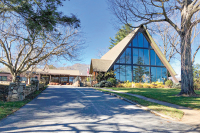Going back to explain ‘back of beyond’
Most of us at one time or another hanker for a place where we can get away from it all for awhile … recharge our batteries as it were. But some yearn for a place where they can hide away …begin all over again. Like Huck tells Jim at the end of The Adventures of Huckleberry Finn, he’s ready to “light out for the territory” … it’s time to seek a “Never Never Land” like the one Horace Kephart memorably described in the second chapter of Our Southern Highlander:
“When I went south into the mountains I was seeking a Back of Beyond. This for more reasons than one. With an inborn taste for the wild and romantic, I yearned for a strange land and a people that had the charm of originality. Again, I had a passion for early American history; and, in Far Appalachia, it seemed that I might realize the past in the present, seeing with my own eyes what life must have been to my pioneer ancestors of a century or two ago. Besides, I wanted to enjoy a free life in the open air, the thrill of exploring new ground, the joys of the chase, and the man’s game of matching my woodcraft against the forces of nature, with no help from servants or hired guides.
So, casting about for a biding place that would fill such needs, I picked out the upper settlement of Hazel Creek, far up under the lee of those Smoky Mountains that I had learned so little about. On the edge of this settlement, scant two miles from the post-office of Medlin, there was a copper mine, long disused on account of litigation, and I got permission to occupy one of its abandoned cabins.”
The phrase “Back of Beyond” is undeniably evocative. Through the years, since first encountering it, I’ve wondered about its origins and equivalents. Kephart partially divulged his sources:
“Of certain remote parts of Erin, Jane Barlow says: ‘In Bogland, if you inquire the address of such or such person, you will hear not very infrequently that he or she lives ‘off away at the Back of Beyond’ ... A traveler to the Back of Beyond may consider himself rather exceptionally fortunate, should he find that he is able to arrive at his destination by any mode of conveyance other than ‘the two standin’ feet of him.’ Often enough the last stage of his journey proceeds down some boggy boreen, or up some craggy hill-track, inaccessible to any wheel or hoof that ever was shod.’”
Barlow, I discovered was the daughter of Rev. James William Barlow, vice provost of Trinity College, Dublin. Born in Clontarf, County Dublin, she spent most of her life living in a thatched cottage in Raheny, in the townland of Ballyhoy. She died in Bray, County Wicklow. Barlow was a poet, novelist, and writer of short stories who also wrote one play. Her work had its admirers in Britain and Irish America, rather than in nationalist Ireland.
Related Items
Irish Idylls, which went into eight editions, is her most famous collection. But it’s likely that Kephart lifted the “Back of Beyond” phrase from her At the Back of Beyond, which was published in 1902.
While tracking down Miss Barlow and her use of “Back of Beyond,” I encountered some words and phrases often used as equivalents. “Back o’ Bourke” is Australian, in reference to the remote town of Bourke in north-western New South Wales. “Timbuktu” is a town in the West African nation of situated 10 miles north of the River Niger on the southern edge of the Sahara Desert. And, my favorite, “Beyond the Black Stump” is also Australian.
Online sources indicate that the most prosaic explanation for the origin of ‘black stump’ derives from the general use of fire-blackened tree-stumps as markers when giving directions to travellers unfamiliar with the terrain. An early use of the phrase from the a Sydney journal of 31 March 1900 seems to lend support to this explanation: ‘A rigmarole of details concerning the turns and hollows, the big tree, the dog-leg fence, and the black stump.” A quote from John Wynnum’s I’m a Jack, all Right conveys this meaning: “It’s way Back o’ Bourke. Beyond the Black Stump. Not shown on the petrol station maps, even.”
George Ellison wrote the biographical introductions for the reissues of two Appalachian classics: Horace Kephart’s Our Southern Highlanders and James Mooney’s History, Myths, and Sacred Formulas of the Cherokees. In June 2005, a selection of his Back Then columns was published by The History Press in Charleston as Mountain Passages: Natural and Cultural History of Western North Carolina and the Great Smoky Mountains. Readers can contact him at P.O. Box 1262, Bryson City, N.C., 28713, or at This email address is being protected from spambots. You need JavaScript enabled to view it..









